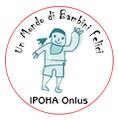Per quanto riguarda poi l’Osteoma cutis o POC, ormai è da tutti considerato una variante minore della POH con un disordine dell’ossificazione eterotopica che colpisce soltanto cute e sottocute senza mai progredire verso i tessuti mesenchimali profondi.
Ovviamente anche in questo caso non ci sono malformazioni scheletriche né dismorfiche ed appare anch’esso nel primo anno di vita, e talvolta può darci qualche iniziale problema diagnostico. Non per niente Miller conclude che “patients with a varied clinical picture have been reported under the designation Platelike Osteoma Cutis, it seems likely that some of these cases are the entity now termed POH. … Because of our limited understanding of the pathogenesis of Platelike Osteoma Cutis and POH, it is difficult to determine if they are variants of the same disorder. Until more patients are studied, we propose that the term Platelike Osteoma Cutis be used for localized, non progressive disease and that POH be used for progressive disease that involves deeper structures as well as the skin”.
| POH: diagnosi differenziale |
POH |
FOP |
AHO |
POC |
| FORMAZIONE OSSO ECTOPICO |
+ |
+ |
+ |
+ |
| GENE IMPLICATO |
GNAS |
ACVR1 |
GNAS |
GNAS |
| OSSIFICAZIONE MEMBRANOSA |
+ |
– |
+ |
+ |
| OSSIFICAZIONE ENCONDRALE |
– |
+ |
– |
– |
| COINVOLGIMENTO CUTE |
+ |
– |
+ |
+ |
| COINVOLGIMENTO TESSUTO ADIPOSO |
+ |
– |
+ |
+ |
| COINVOLGIMENTO MUSCOLI |
+ |
+ |
– |
– |
| MALFORMAZIONI ALLUCI |
– |
+ |
– |
– |
| PROGRESSIONE CUTE à MUSCOLI |
+ |
– |
– |
– |
| IMMOBILIZZAZIONE SEVERA |
+ |
+ |
– |
– |
| SCOLIOSI SEVERA |
– |
+ |
– |
– |
| SQUILIBRIO ORMONALE |
– |
– |
+ |
– |
| ASPETTO DISMORFICO, BRACHIDATTILIA, RITARDO MENTALE |
– |
– |
+ |
– |
| OSSIFICAZIONI POST-INIEZIONE |
– |
+ |
– |
– |
| GRAVI FLARE-UP |
– |
+ |
– |
– |
| Tab. 1: Criteri di diagnosi differenziale delle patologie con ossificazioni eterotopiche (da Kaplan e coll., tradotta e modificata in parte). |

